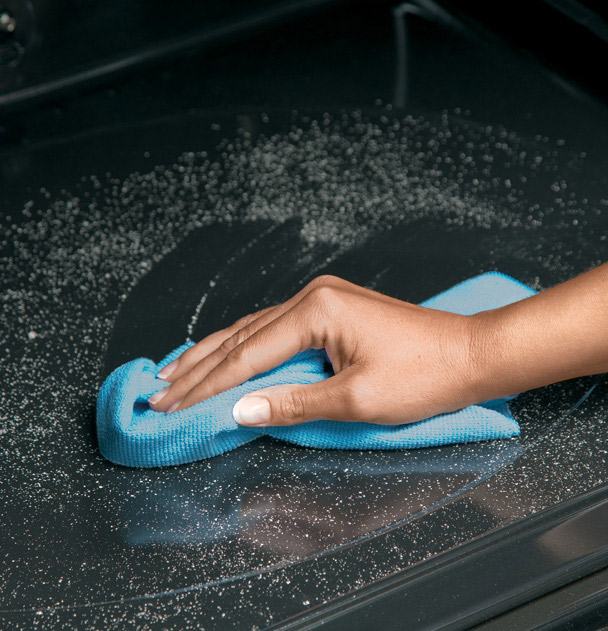
Despite our best efforts, all of us have experienced an inevitable spill-over in the oven at one point or another. Whether it's cheese melting off your pizza, or a cobbler oozing over the baking dish, spills inside the oven leave a mess! When shopping for a new range, it's important to understand the options that are available for cleaning. Here are a few of the cleaning options available in GE ranges.

The self-clean cycle is a time-saving convenience feature. The oven is cleaned by heat, at temperatures above normal cooking temperatures. During the cleaning cycle the oven is heated to about 880 degrees Fahrenheit (471° C.). At this temperature, food soils inside the oven decompose, leaving behind a small amount of ash. The leftover ash is similar to cigarette ashes, and wipes out easily with a wet cloth.
The cycle takes from one and a half hours to three hours, depending upon the amount of soil. A slight odor may be detected the first few times the oven is cleaned. No commercial oven cleaner or oven liner of any kind should be used in or around any part the of the self-clean oven. Do not use pieces of aluminum foil to catch spillovers. Depending on your oven model, the pans and racks may need to be removed. As a general rule, you may leave self clean racks in your oven, but you must remove stainless steel racks.
Avoid the time required for conventional self-clean ovens. Steam Clean allows for quick cleaning of minor food spills at temperatures lower than the standard self-clean feature. Simply pour 1 cup of water into the bottom of a cool oven. Close the door and select Steam Clean. The cycle lasts about 30 minutes, and loosens and softens the grime in the oven. Once the cycle is complete, wipe out the moisture and food soils with a soft cloth. Because Steam Clean uses a lower temperature and does not involve chemicals, pans and racks can remain in the oven during cleaning.
In the event there is a difficult to remove spill or the spill is baked on multiple times, a cleaner made for use in ovens may be used. Be sure to follow the instructions on the product label. GE Appliances recommends Bar Keepers Friend or a solution of vinegar and baking soda. Care should be taken to remove these cleaners prior to range use.
You may also clean your range by using the ammonia method described below for manual clean ranges.
Manual Clean ovens do not have self-clean or steam clean features, and require cleaning by hand. Frequent wiping with mild soap and water (particularly after cooking meat) will prolong the time between major cleanings.
For light food soils, soap, water and a scouring pad should be all that is needed. Tougher soils might require a commercial oven cleaner made for use in a standard clean oven. Be sure to follow the instructions on the product label.The job of cleaning a standard clean oven can be made easier by using household ammonia. Place 1/2 cup in a shallow glass or pottery container in a cold oven overnight. The ammonia fumes will help loosen the burned-on grease and food.
Caution: Do not turn oven on while ammonia is inside.
Keeping your range looking new is easy if you watch this quick use and care video. From selecting the best cleaners, proper maintenance practices, to identifying the proper cookware this video will show you all you need to know about enjoying your new range. In addition, please reference the use and care manual by typing your model number in the search box at the top of this page for comprehensive instructions and guidelines.